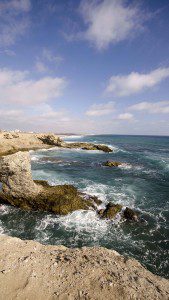 La Lobería is a small but interesting tourist destination on the coast of Ecuador. It is actually located on a military base but access for tourists is quite easy. The point of coming here is to see sea lions, or Lobos Marinos (literally sea wolves). I have to admit, for folks who know the Pacific Coast of North America, this chance to see sea lions might be a bit of a let down. The animals are difficult to see without binoculars or a zoom lens and if they enter the water, they are even harder to see.
La Lobería is a small but interesting tourist destination on the coast of Ecuador. It is actually located on a military base but access for tourists is quite easy. The point of coming here is to see sea lions, or Lobos Marinos (literally sea wolves). I have to admit, for folks who know the Pacific Coast of North America, this chance to see sea lions might be a bit of a let down. The animals are difficult to see without binoculars or a zoom lens and if they enter the water, they are even harder to see.
But when put into perspective, it’s actually an amazing opportunity. First, these sea lions are a different species, the South American sea lion or Otaria flavescens. Second, this colony is special because they generally live and breed further south in Peru and Chile on the Pacific Coast or in Uruguay and Argentina on the Atlantic. This is the furthest north these animals roam. If you’re looking to add the Lobo Marino del Sur America to your life list, this may be one of the easiest places to do so.
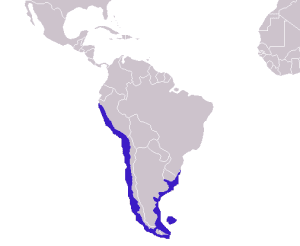 This colony of Lobos Marinos is currently being studied by a local university and you can sometimes see young scientists observing them. So far, they have learned that this colony does not breed in Ecuador. This is a group of transitory visitors looking for available prey, mainly fish like anchovies or cephalopods like squid and octopus. This small corner of Ecuadorian coast is protected both by law and by natural features making it difficult, if not impossible, for fishermen to harvest in the area. The waves and rip tides prevent people from entering the water, except for a few hardy surfers who thrive on the adrenaline producing rides, so the sea lions are left pretty much in isolation. Human visitors cannot get close to these animals and the best they can do is to walk out to the viewing stand placed out as far as possible on the coast and allows an unimpeded view of these huge beasts sprawled across the rocks nearby. Which is probably a good thing. A male South American sea lion can be as large as 770 pounds and 9 feet tall while members of his harem are half their weight but almost as tall, about 6 to 7 feet. All of them would tower over most of us.
This colony of Lobos Marinos is currently being studied by a local university and you can sometimes see young scientists observing them. So far, they have learned that this colony does not breed in Ecuador. This is a group of transitory visitors looking for available prey, mainly fish like anchovies or cephalopods like squid and octopus. This small corner of Ecuadorian coast is protected both by law and by natural features making it difficult, if not impossible, for fishermen to harvest in the area. The waves and rip tides prevent people from entering the water, except for a few hardy surfers who thrive on the adrenaline producing rides, so the sea lions are left pretty much in isolation. Human visitors cannot get close to these animals and the best they can do is to walk out to the viewing stand placed out as far as possible on the coast and allows an unimpeded view of these huge beasts sprawled across the rocks nearby. Which is probably a good thing. A male South American sea lion can be as large as 770 pounds and 9 feet tall while members of his harem are half their weight but almost as tall, about 6 to 7 feet. All of them would tower over most of us.
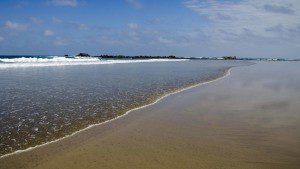 It is possible to combine this visit with one to La Chocolatera. You can amble along the recently constructed boardwalk between the two sites or you can walk the beach itself and use the opportunity to birdwatch, to beachcomb, or to even walk out on the rocks for tidepooling if you time your visit with the low tide. Animals in the rocks are small and hard to see but that only adds to the adventure. And, as tempting as the waves and water seem, please don’t go swimming. We actually learned this the hard way… Californians that we, we decided that the riptide would be recognizable and that we could avoid the dangerous pull of the water. We did, but barely. The surfers in the area know the tides well and the additional aide of having a flotation device to bring you back safely is likely essential to escaping the riptide. Just stay out of the water to be on the safe side.
It is possible to combine this visit with one to La Chocolatera. You can amble along the recently constructed boardwalk between the two sites or you can walk the beach itself and use the opportunity to birdwatch, to beachcomb, or to even walk out on the rocks for tidepooling if you time your visit with the low tide. Animals in the rocks are small and hard to see but that only adds to the adventure. And, as tempting as the waves and water seem, please don’t go swimming. We actually learned this the hard way… Californians that we, we decided that the riptide would be recognizable and that we could avoid the dangerous pull of the water. We did, but barely. The surfers in the area know the tides well and the additional aide of having a flotation device to bring you back safely is likely essential to escaping the riptide. Just stay out of the water to be on the safe side.
- The rocks and rip tides make this area difficult to navigate.
- This small section of rock makes up the home for a small colony of South American Sea Lions.
- Enjoying the Surf – please be sure to ask the locals about conditions before surfing near La Lobería.
- The beach literally moves as crabs attempt to get out of the way of walking tourists.
- Each of these anemone are only abut a 1 cm wide.
- The males are large with heavy heads and fur ruffs around their necks. The females are grayer and much smaller.
- Enjoying the Surf – please be sure to ask the locals about conditions before surfing near La Lobería.
- The different colors of blue in the waters attest to the rapidly changing depths.
- Patterns in the sand
- Two males debate whether today is a day for a little fight. We only saw a little roaring but no actual teeth bared.
- The Beach near La Lobería, known as Playa del Mar Bravo.
- Lobos Marinos or Sea Wolves (more commonly known as sea lions in English)
- Looking towards La Chocolatera
- Yes, on sunny days the water and sky are stunningly different colors of blue.
- A Royal Tern
- A lobster body found on the beach… perhaps the remains of someone’s lunch?
- The view point and the rocky coast that the South American Sea Lion calls home.
- This is the coastline looking away from Salinas. The beach actually parallels the runway to the Salinas Airport.
- Beautiful water but dangerous conditions. Do not go swimming at this beach.
- A Royal Tern
- A Whimbrel escaping the camera lens.
[ready_google_map id=’22’]


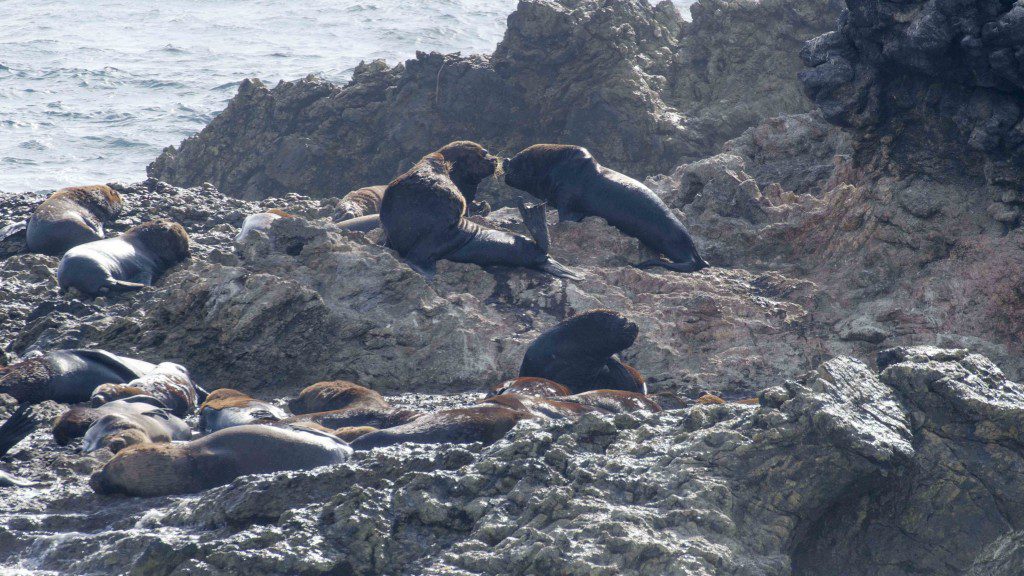























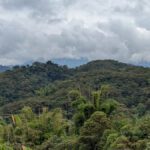





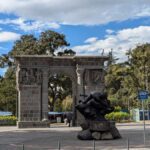


0 comentarios